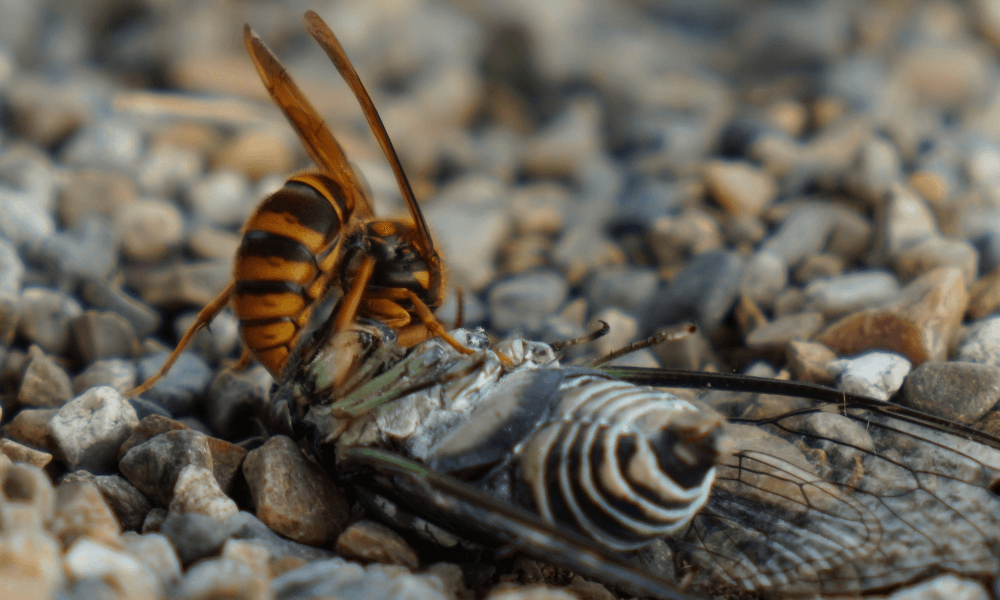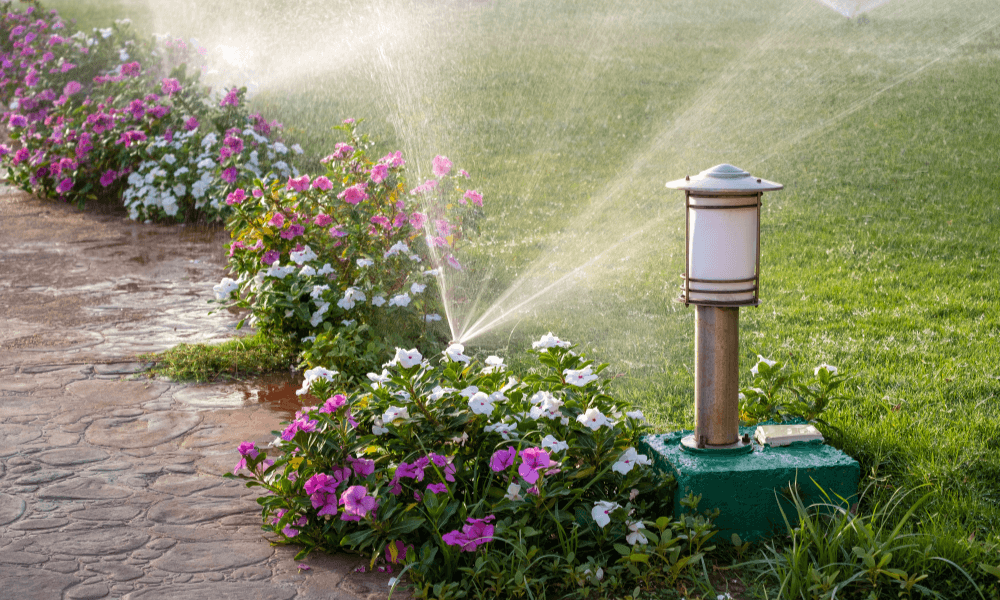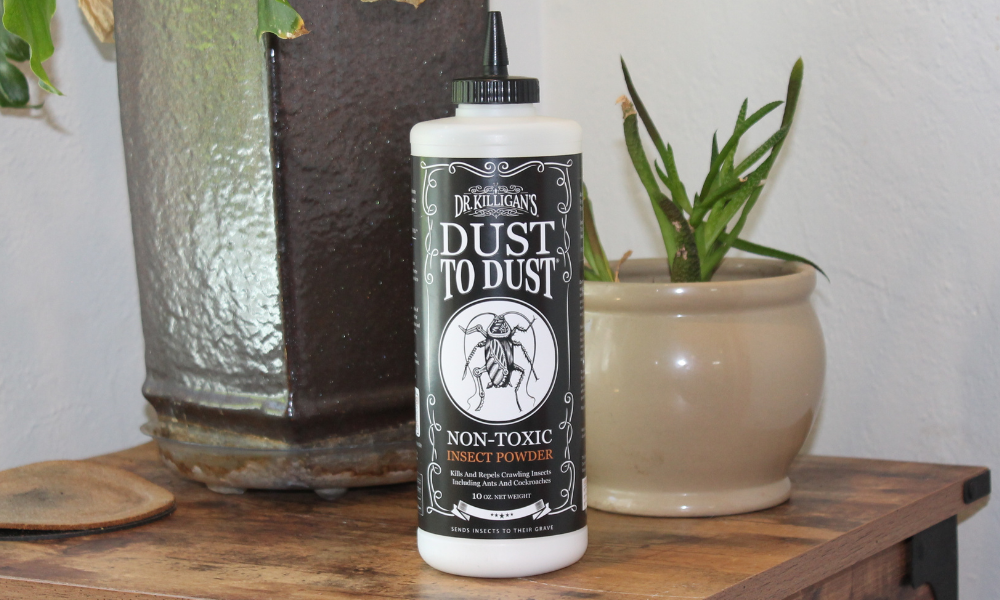Are you finding your yard becoming a battleground for cicada killers? These intimidating, yet fascinating wasps can turn serene gardens into sites of aerial hunts and burrowed tunnels.
At Dr. Killigan's, we understand your concerns and are here to guide you through environmentally friendly methods for managing these winged warriors. Whether you're pondering how to get rid of cicada killers, contemplating the necessity of killing them or searching for humane solutions, this article is crafted for you.
The fascinating world of cicada killers: Nature's skilled hunters
Cicada killers, scientifically known as Sphecius speciosus, are large, solitary wasps renowned for their remarkable method of preying on cicadas.
Unlike other predatory insects, the female cicada killer uses her stinger not to kill but to paralyze cicadas. After immobilizing a cicada, she undertakes the Herculean task of first flying it to her nesting area, and then pulling the cicada underground to a meticulously dug nest located 12-15 inches below in loose, dry soil.
Fact: The cicada, mind you, is not dead, but merely immobilized—sometimes continuing its incessant buzzing even while being dragged to the hole.
The nesting behavior of the cicada killer is both fascinating and strategic. Females have the extraordinary ability to determine the sex of their eggs, allocating one cicada as nourishment for male larvae and two for female larvae. After laying an egg alongside the cicada in a nursery cell, she seals off the chamber.

Fact: Female larvae, receiving two or sometimes even three cicadas to feed on, grow significantly larger than their male counterparts.
The egg hatches in 2-3 days, and the larva then burrows into the cicada carcass to begin the slow process of devouring the immobilized, yet still-living cicada from the inside out. This feeding frenzy lasts about ten days, culminating in the larva leaving behind nothing but an empty cicada exoskeleton.
Equally interesting is their life cycle rhythm; larvae overwinter in their cells, emerging the following July as adults. Between mating, which occurs shortly after emergence, and mid-August, the new adults dig soil burrows, stock them with cicadas and the reproductive cycle is repeated. Adults typically die by mid-September, having ensured the continuation of their species.
Why cicada killers are in your yard:
Cicada killers are drawn to areas that meet their specific nesting and hunting requirements. They prefer well-drained, sandy soils for digging their burrows and abundant trees harboring cicadas for feeding their offspring.
Your yard might offer the perfect habitat for these wasps, especially if it includes features like dry open-soil areas beneath large shrubs, under roof eaves, around rock retaining walls or sometimes even in vegetable gardens.
How to get rid of cicada killers:
To manage cicada killers in your yard, consider implementing these three environmentally friendly and non-lethal strategies:
1. Modify the habitat: Altering the environment can make it less appealing for cicada killers.

- Watering: Increase the frequency of watering your lawn and garden areas. Keeping the soil moist is a simple yet effective deterrent.
- Planting ground cover: Introduce more ground cover. Planting dense vegetation or grasses leaves less exposed soil, making it more challenging for cicada killers to find suitable nesting sites.
- Applying mulch: Lay a 2–4-inch layer of wood chips or other organic mulch over exposed soil areas. Mulch not only retains moisture—which these wasps avoid— but also creates a physical barrier, making the soil less accessible for them to establish their burrows.
2. Remove food sources: While it's not feasible to eliminate all cicadas from your property, reducing areas where cicadas are abundant can make your yard less attractive to cicada killers. Pruning trees and managing vegetation—like moving and weeding—can help minimize the cicada population, indirectly affecting the wasp's food source.
3. Use natural repellents: Utilizing natural repellents can deter cicada killers without harming the environment. Planting insect-repelling plants—like marigolds, citronella, lavender and basil—can help keep these wasps at bay. Essential oils, such as peppermint and eucalyptus—sprayed around the yard—can also act as natural deterrents.
Should I kill cicada killers?
Before deciding to kill them, understand their ecological role. These wasps help control cicada populations, which can be beneficial for your trees and garden. Additionally, despite their large, ominous appearance which can evoke fear, cicada killers are not typically aggressive toward humans unless provoked.
Cicada killers can look intimidating—resembling a giant hornet or a huge yellow-jacket—and their size and behavior might alarm some people. However, it's important to recognize that cicada killers are solitary wasps and are generally less likely to sting.
Fact: The wasps often seen flying around aggressively are males, which are incapable of stinging—as they are stinger-less.
They may fly close to people, dive-bomb or even hover in front of your face as part of their patrol behavior, but they pose no stinging threat. Females, which can sting, do not defend their burrows and will only do so if directly mishandled.
How to kill cicada killers (if necessary):

If eliminating cicada killers is the only option, do so in a manner that minimizes environmental impact. Dr. Killigan's advocates for the use of non-toxic methods:
- Diatomaceous Earth (DE): Sprinkling food-grade DE around nest entrances can dehydrate and kill the wasps without using harsh chemicals.
- Soapy water: A solution of soapy water poured into the nests at night (when the wasps are less active) can be an effective method to eliminate them.
Embracing a balanced approach:
At Dr. Killigan's, we encourage you to weigh the benefits and drawbacks of removing cicada killers from your property. These wasps play a significant role in the ecosystem, and their removal should be considered carefully. If their presence is tolerable, observing these incredible insects from a distance can be a unique and educational experience. However, if intervention is necessary, choosing humane and environmentally friendly methods ensures you're not only solving your problem but also protecting our planet.
Conclusion:
Managing cicada killers in your yard doesn't have to involve harsh chemicals or lethal methods. By understanding their behavior, modifying their habitat and using natural deterrents, you can effectively manage or coexist with these fascinating insects.
Remember, every creature has its role in the ecosystem, and finding a balance is key to a healthy and thriving garden. Trust Dr. Killigan's to provide you with the knowledge and tools to make informed decisions, ensuring a peaceful coexistence with all backyard inhabitants.





















